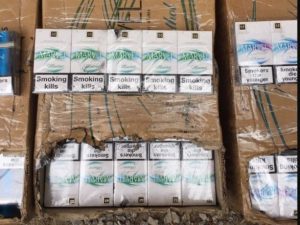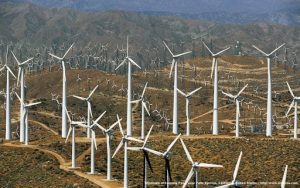
A group of MPs has registered bill No. 4245 with amendments to the Budget Code on the electronic residency mechanism, which implies a preferential income tax rate of 5%, in the Verkhovna Rada.
According to the information on the parliamentary website, the bill was registered on October 21 by MPs from the Holos faction Yaroslav Zhelezniak, Volodymyr Tsabal, Kira Rudik and Halyna Vasylchenko, as well as MP from the Servant of the People Danylo Hetmantsev.
“The idea is simple. If you are an IT specialist from India, China, Pakistan, Germany, or even Belarus, then, being in your country, you can become an electronic resident, that is, an electronic taxpayer. And for this you will pay only one simple tax – 5%, which our sole proprietors pay from turnover,” Zhelezniak said.
According to him, this mechanism may be of interest, in particular, to citizens of Asian countries. On the other hand, this will allow attracting additional funds to the national budget, he said.
“This proposal may not be so interesting to the United States or the EU, but it will definitely be interesting to other countries, especially Asia, the East, which have not a better reputation and more complex tax legislation compared to the Ukrainian one,” Zhelezniak said.

Dozens of Belarusian IT companies have already moved to Ukraine thanks to the IT Relocate Belarus project, which is being implemented by the team of the Ministry of Digital Transformation with the support of President Volodymyr Zelensky, Deputy Minister of Digital Transformation Oleksandr Borniakov has said.
“We have created IT Relocate for those who want to relocate themselves or move their team from Belarus to Ukraine, and are ready to provide support in the future. As the AIN.UA source said, Wargaming has moved hundreds of employees to Ukraine. The company is the developer of the world famous online games World of Tanks, World of Warships and World of Warplanes,” he wrote on his Facebook page.
According to him, another Belarusian IT company, PandaDoc, is opening its office in Kyiv. Founder Nikita Mikado notes the talents of Ukrainian specialists, favorable tax conditions and the actions of the Ukrainian government in supporting the IT industry in Belarus.
“Ukraine is rapidly digitalizing, becoming a global IT hub and creating comfortable conditions for the development of the IT industry. Ukraine is ready to provide Belarusian specialists with opportunities to work on a simplified registration system,” Borniakov said.
The IT Relocate Belarus project offers 90 days of continuous stay for 180 days without obtaining a visa, an average salary of $2,000, 4G in all major cities, more than 5,600 service and technology companies, affordable housing and office rent.

Shakhtar Donetsk beat Real Madrid 3-2 in the first round of the Champions League group stage.
In the first half, Shakhtar, played in a weakened line-up due to the early detection of coronavirus (COVID-19) in a number of team players, managed to score three unanswered goals against the Royal Club. Brazilian Tete, Real Madrid defender Raphael Varane, and Shakhtar’s Israeli midfielder Manor Solomon scored a goal.
At the beginning of the second half, Real managed to win back two goals after accurate hits by Luka Modric and Vinicius Junior. In the last seconds of the match, Madrid managed to score the third goal after hitting Federico Valverde, but the goal was canceled after the referee watched a video replay due to offside position of one of the Spanish team’s players.
This group also includes the Italian Inter and the German Borussia (Mönchengladbach).

The reform of the National Police of Ukraine is considered successful by 13.9% of National Police officers and 32% of patrol officers, according to the study “National Monitoring of Unlawful Police Violence in 2020” conducted by Kharkiv Institute for Social Research.
According to the results of the survey, 58.5% of police employees and 37.6% of patrol police consider transformations in the National Police unsuccessful. The option “the reform is not finished yet” was chosen by 26% and 28.8% of the respondents, respectively. 1.6% of the polled police and patrol officers believe that changes in the structure have not yet begun.
The survey of employees of the National Police of Ukraine was carried out using the methods of group questionnaires and surveys using an online form. The sample can be considered representative of the employees of the National Police of Ukraine as a whole. The statistical error with a probability of 0.95 does not exceed 3.0% for data close to 50%, 2.6% – for data close to 25% or 75%, and 1.8% – for data close to 10% or 90%.
This publication has been funded by the European Union.

The share of the illegal cigarette market in Ukraine as of August 2020 increased to 6.9% compared to 6.6% in 2019, CEO of the tobacco company JTI Ukraine Paul Holloway has said, citing a Kantar study.
“This means that in the first eight months of this year, the national budget received UAH 4.5 billion less,” he said at a press conference at Interfax-Ukraine on Wednesday.
According to Kantar data, over the entire past year, the share of illegal trade in tobacco products in Ukraine was 6.6%, or 3.5 billion cigarettes. As a result, the national budget received UAH 4.7 billion less.
At the same time, in July 2020, Kantar estimated the volume of the illegal cigarette market in Ukraine at 5%.
As Holloway said, consumers spend about 25% of their income on cigarettes. Consequently, an increase in the price of cigarettes will lead to an increase in the illicit trade in cigarettes.
The CEO of JTI Ukraine said that legal business is losing market share in favor of illegal manufacturers and smugglers. Moreover, 75-80% of the cost of legal cigarettes are taxes, which the manufacturers of illegal cigarettes do not pay.
To fight the illegal tobacco market, the company launched the No Smuggling project, he said.
Acting Head of the State Fiscal Service (SFS) Serhiy Solodchenko said that in the first nine months of 2020, his service seized excisable goods for the amount of UAH 2.034 billion, of which about 36% in monetary terms were tobacco products.
During this period, the tax police seized 11.5 million packages of tobacco products and 164 tonnes of tobacco from illegal circulation for the amount of UAH 730.4 million. In monetary terms, this is almost twice more compared to the same period last year.

Wind Power GSI Volyn LLC intends to build a wind power plant with a capacity of 150 MW in Ivanychi and Volodymyr-Volynsky districts of Volyn region.
According to the website of the unified register of environmental impact assessment, within the framework of the project, it is planned to install 28 wind turbines in the territory of Ivanychi district and 1 wind facility in the territory of Volodymyr-Volynsky district with a capacity of up to 7 MW each. The tower height is up to 166 meters, the rotor diameter is up to 170 meters.
It is also planned to build a high-voltage substation of 35/110 kV with an area of up to 1 hectare with transformer equipment to ensure the reception and transmission of generated electricity from the station to the network. The transmission of electricity generated at the wind farm to the unified state power grid will be carried out through the existing 330 kV Novovolynsk substation of Ukrenergo.
The wind farm is expected to generate about 540,000 MWh of “green” electricity.
According to the data of the Unified state register of legal entities and individual entrepreneurs, Wind Power GSI Volyn (Lviv) belongs to Greenville closed non-diversified venture corporate investment fund. The ultimate beneficiary is Ivan Torsky, the director general of TKS Development Holding.